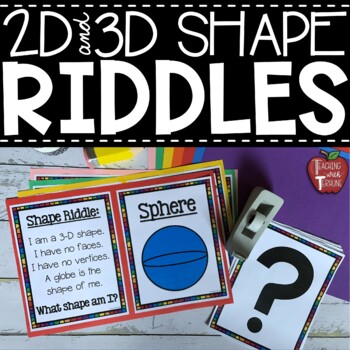Shape Riddles for 2D and 3D Shapes
- PDF
What educators are saying
Description
Use these fun shape riddles to help your students practice their 2D (plane shapes) and 3D shape names and attributes. Each riddle covers attributes such as the number of sides and vertices the shape has.
This file includes riddles for the following shapes:
- Circle
- Triangle
- Square
- Rectangle
- Trapezoid
- Rhombus/Diamond
- Oval
- Pentagon
- Hexagon
- Octagon
- Kite
- Parallelogram
- Sphere
- Pyramid
- Cube
- Rectangular Prism
- Cylinder
- Cone
Assembly Directions:
Simply tape the riddle and shape picture onto a piece of 12x18 construction paper. To create the hidden shape question mark flap, attach the question mark page over the shape picture by stapling it along the top edge of the paper.
How to Use:
Read the riddle to your students. Have them guess what shape goes with the riddle. Flip to reveal what shape is under the question mark to see if they are correct! These riddles are also great to place at a center!
Have questions? Contact me at amandaterhune1@hotmail.com
Check out my: BLOG · FACEBOOK · PINTEREST · INSTAGRAM · ETSY





